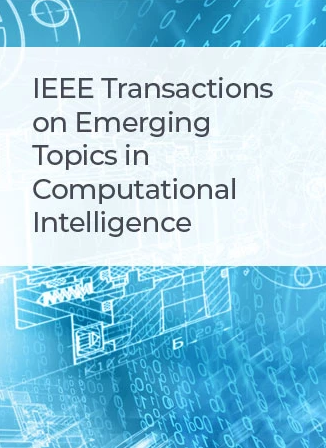A Novel Projection Neural Network for Sparse Optimization With ${L_\mathrm{{1}}}$-Minimization Problem
IF 5.3
3区 计算机科学
Q1 COMPUTER SCIENCE, ARTIFICIAL INTELLIGENCE
IEEE Transactions on Emerging Topics in Computational Intelligence
Pub Date : 2024-03-28
DOI:10.1109/TETCI.2024.3377265
引用次数: 0
Abstract
In this paper, a novel projection neural network (PNN) for solving the用于稀疏优化的新型投影神经网络与 ${L_\mathrm{1}}$ 最小化问题
本文提出了一种解决 $L_{1}$ 最小化问题的新型投影神经网络 (PNN),可应用于稀疏信号重建和图像重建。首先,利用投影矩阵和投影算子设计了一个单层 PNN,证明它在 Lyapunov 意义上是稳定的,并且全局收敛于 $L_{1}$ 最小化问题的最优解。然后,我们进一步研究了所提出的 PNN 的有限时间收敛性,给出了收敛时间的上限并分析了收敛速率。最后,我们将提出的 PNN 与现有的神经网络进行了比较。基于随机高斯稀疏信号的实验结果证明了我们提出的 PNN 的有效性和性能。此外,我们还进一步进行了灰度图像重建和彩色图像重建实验,充分证明了我们提出的 PNN 的优越性。
本文章由计算机程序翻译,如有差异,请以英文原文为准。
求助全文
约1分钟内获得全文
求助全文
来源期刊

IEEE Transactions on Emerging Topics in Computational Intelligence
Mathematics-Control and Optimization
CiteScore
10.30
自引率
7.50%
发文量
147
期刊介绍:
The IEEE Transactions on Emerging Topics in Computational Intelligence (TETCI) publishes original articles on emerging aspects of computational intelligence, including theory, applications, and surveys.
TETCI is an electronics only publication. TETCI publishes six issues per year.
Authors are encouraged to submit manuscripts in any emerging topic in computational intelligence, especially nature-inspired computing topics not covered by other IEEE Computational Intelligence Society journals. A few such illustrative examples are glial cell networks, computational neuroscience, Brain Computer Interface, ambient intelligence, non-fuzzy computing with words, artificial life, cultural learning, artificial endocrine networks, social reasoning, artificial hormone networks, computational intelligence for the IoT and Smart-X technologies.
 求助内容:
求助内容: 应助结果提醒方式:
应助结果提醒方式:


